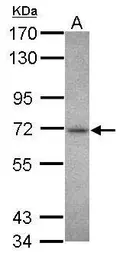Chk2 antibody
Cat. No. GTX113055
Cat. No. GTX113055
-
HostRabbit
-
ClonalityPolyclonal
-
IsotypeIgG
-
ApplicationsWB ICC/IF
-
ReactivityHuman



